I'm trying to determine the cycles in a directed graph using Tarjan's algorithm, presented in his research paper "Enumeration of the elementary circuits of a directed graph" from Septermber 1972.
I'm using Python to code the algorithm, and an adjacency list to keep track of the relationships between nodes.

So in "G" below, node 0 points to node 1, node 1 points to nodes 4,6,7... etc.
G = [[1], [4, 6, 7], [4, 6, 7], [4, 6, 7], [2, 3], [2, 3], [5, 8], [5, 8], [], []]
N = len(G)
points = []
marked_stack = []
marked = [False for x in xrange(0,N)]
g = None
def tarjan(s, v, f):
global g
points.append(v)
marked_stack.append(v)
marked[v] = True
for w in G[v]:
if w < s:
G[v].pop(G[v].index(w))
elif w == s:
print points
f = True
elif marked[w] == False:
if f == g and f == False:
f = False
else:
f = True
tarjan(s, w, g)
g = f
if f == True:
u = marked_stack.pop()
while (u != v):
marked[u] = False
u = marked_stack.pop()
#v is now deleted from mark stacked, and has been called u
#unmark v
marked[u] = False
points.pop(points.index(v))
for i in xrange(0,N):
marked[i] = False
for i in xrange(0,N):
points = []
tarjan(i,i, False)
while (len(marked_stack) > 0):
u = marked_stack.pop()
marked[u] = False
Tarjan's algorithm detects the following cycles:
[2, 4]
[2, 4, 3, 6, 5]
[2, 4, 3, 7, 5]
[2, 6, 5]
[2, 6, 5, 3, 4]
[2, 7, 5]
[2, 7, 5, 3, 4]
[3, 7, 5]
I've also done Tiernan's algorithm, and it (correctly) finds 2 extra cycles:
[3,4]
[3,6,5]
I'd appreciate any help in finding out why Tarjan skips over those 2 cycles. A problem in my code perhaps?